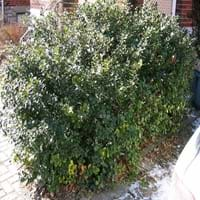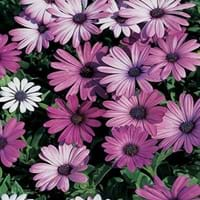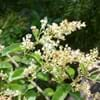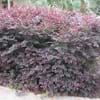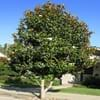Life Span
Perennial
Annual and Perennial
Type
Broadleaf Evergreen
Tender Perennial
Origin
Hybrid origin
South Africa
Types
Ilex abscondita, Ilex aculeolata, Ilex affinis
Osteospermum acanthospermum, Osteospermum amplectens, Osteospermum burttianum
Habitat
Subtropical climates, Woodland Garden Secondary, Woodlands
Coastal Regions, Sandy areas, Terrestrial
USDA Hardiness Zone
5-9
10-11
AHS Heat Zone
Not Available
Not Available
Sunset Zone
21,22
8, 9, 12, 13, 14, 15, 16, 17, 18, 19, 20, 21, 22, 23, 24
Habit
Oval or Rounded
Clump-Forming
Minimum Height
Not Available
Flower Color
White
White, Purple, Blue Violet
Flower Color Modifier
Bicolor
Bicolor
Fruit Color
Red
Not Available
Leaf Color in Spring
Dark Green
Green
Leaf Color in Summer
Dark Green
Green
Leaf Color in Fall
Dark Green
Green, Blue Green
Leaf Color in Winter
Dark Green
Light Green
Leaf Shape
Pinnate
Irregular
Plant Season
Spring, Summer, Fall, Winter
Spring, Summer, Fall
Sunlight
Full Sun, Partial Sun, Partial shade
Full Sun, Partial Sun
The pH of Soil
Acidic, Neutral
Neutral
Soil Drainage
Well drained
Well drained
Bloom Time
Late Spring
Late Spring, Early Summer, Summer, Late Summer, Early Fall, Fall
Where to Plant?
Container, Ground, Pot
Container
How to Plant?
Seedlings, Semi-ripe cuttings
Seedlings, Stem Cutting
Plant Maintenance
Medium
Medium
Watering Requirements
Requires regular watering
Do Not over Water, Keep ground moist
In Summer
Lots of watering
Lots of watering
In Spring
Moderate
Moderate
In Winter
Average Water
Average Water
Soil pH
Acidic, Neutral
Neutral
Soil Drainage Capacity
Well drained
Well drained
Sun Exposure
Full Sun, Partial Sun, Partial shade
Full Sun, Partial Sun
Pruning
No pruning needed, Prune in early spring, Prune in winter, Remove damaged leaves, Remove dead branches, Remove dead leaves, Requires little pruning
Remove damaged leaves, Remove dead branches, Remove dead leaves
Fertilizers
All-Purpose Liquid Fertilizer
All-Purpose Liquid Fertilizer
Pests and Diseases
Red blotch
Red blotch
Plant Tolerance
Salt
Drought
Flowers
Insignificant
Showy
Flower Petal Number
Single
Single
Foliage Texture
Medium
Medium
Foliage Sheen
Glossy
Not Available
Attracts
Birds
Bees, Birds, Butterflies
Allergy
Diarrhea, Mildly Toxic, Vomiting
Not Available
Aesthetic Uses
Cottage Garden, Showy Purposes, Used for making hedges
Beautification, Showy Purposes
Beauty Benefits
Not Available
Not Available
Environmental Uses
Air purification, Food for animals, Food for birds, Wildlife
Air purification
Medicinal Uses
Not Available
Not Applicable
Part of Plant Used
Fruits
Flowers
Other Uses
Food for animals, Used for Landscaping
Used as Ornamental plant
Used As Indoor Plant
No
No
Used As Outdoor Plant
Yes
Yes
Garden Design
Feature Plant, Foundation, Hedges, Mixed Border, Screening, Wind Break
Bedding Plant, Container, Cutflower, Foundation, Groundcover, Hanging Basket, Mixed Border, Rock Garden / Wall
Botanical Name
ILEX x meserveae 'Blue Princess'
OSTEOSPERMUM fruticosum
Common Name
Blue Princess Holly
Shrubby Daisybush, Trailing African Daisy
In Hindi
BluePrincess Holly Plant
Blue Eyed Daisy Plant
In German
BluePrincess Holly Pflanze
Blue Eyed Daisy Pflanze
In French
BluePrincess houx Plante
Blue Eyed Daisy Plante
In Spanish
Planta del acebo BluePrincess
Planta observada azul de la margarita
In Greek
BluePrincess Holly Φυτών
Μπλε Eyed Daisy Φυτών
In Portuguese
BluePrincess Planta Holly
Planta da margarida de olhos azuis
In Polish
BluePrincess Holly roślin
Blue Eyed Daisy roślin
In Latin
Planta BluePrincess Holly
Daisy Blue Eyed Planta
Phylum
Not Available
Magnoliophyta
Class
Not Available
Magnoliopsida
Order
Aquifoliales
Asterales
Family
Aquifoliaceae
Asteraceae
Clade
Angiosperms, Eudicots
Angiosperms, Asterids, Eudicots
Tribe
Not Available
Calenduleae
Subfamily
Not Available
Asteroideae
Importance of Blue Princess Holly and Blue Eyed Daisy Plant
Want to have the most appropriate plant for your garden? You might want to know the importance of Blue Princess Holly and Blue Eyed Daisy Plant. Basically, these two plants vary in many aspects. Compare Blue Princess Holly and Blue Eyed Daisy Plant as they differ in many characteristics such as their life, care, benefits, facts, etc. Every gardener must at least have the slightest clue about the plants he wants to plant in his garden. Compare their benefits, which differ in many ways like facts and uses. The medicinal use of Blue Princess Holly is Not Available whereas of Blue Eyed Daisy Plant is Not Applicable. Blue Princess Holly has beauty benefits as follows: Not Available while Blue Eyed Daisy Plant has beauty benefits as follows: Not Available.
Compare Facts of Blue Princess Holly vs Blue Eyed Daisy Plant
How to choose the best garden plant for your garden depending upon its facts? Here garden plant comparison will help you to solve this query. Compare the facts of Blue Princess Holly vs Blue Eyed Daisy Plant and know which one to choose. As garden plants have benefits and other uses, allergy is also a major drawback of plants for some people. Allergic reactions of Blue Princess Holly are Diarrhea, Mildly Toxic and Vomiting whereas of Blue Eyed Daisy Plant have Not Available respectively. Having a fruit bearing plant in your garden can be a plus point of your garden. Blue Princess Holly has showy fruits and Blue Eyed Daisy Plant has no showy fruits. Also Blue Princess Holly is not flowering and Blue Eyed Daisy Plant is not flowering . You can compare Blue Princess Holly and Blue Eyed Daisy Plant facts and facts of other plants too.
